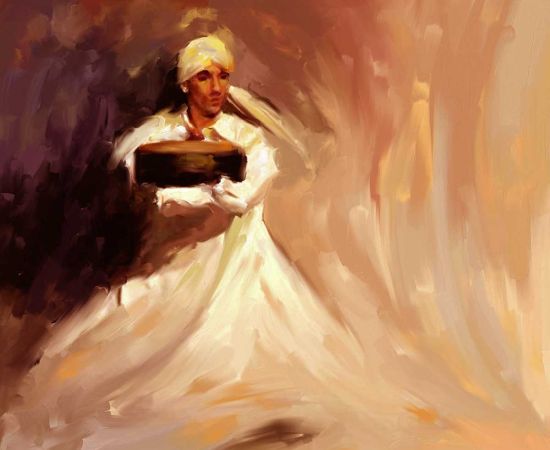More Coverage
Twitter Coverage
JOIN SATYAAGRAH SOCIAL MEDIA
Indian govt won’t be any different from British if Hindus can’t manage their own temples

Ever since the Sabarimala temple case made headlines, the matter of government control over temples has attracted attention. What began with the British rulers trying to control temple riches continues till today. It has not only led to government interference and incompetence, but has also disempowered the age-old system of traditional temple priests.
It is time the Hindu community is allowed to manage their own temples once again – the devotees’ donations should be used for social benefit instead of sitting in a government treasury.
British rulers and Hindu temples
Until the British came to India, temples were managed by local communities. They were centres of dance and art, and at the heart of a massive decentralised trade network according to author Sanjeev Sanyal.
Every temple had charitable endowments, including property given to temples, for the benefit of the community. The benefits included rest-houses, pathshalas, gaushalas, and institutions for the advancement of education and feeding of the poor.
For the British agenda of colonisation and conversions to succeed, the temple organisation had to be weakened. So, temples were brought under government control mainly in south India because not too many temples in the north possessed such massive property or wealth. The British introduced The Madras Regulation VII of 1817 to do this.
In 1840, there was a directive from the East India Company to return the temples to their trustees, because Christian missionaries, in India and abroad, did not like the idea of Christians managing Hindu temples.
Thus, temple management was slowly, handed over to trustees and in case of prominent temples to Mutts by 1845. The Board of Revenue supervised the administration of large temples.
Next came The Religious Endowments Act 1863, which handed over temple administration to the trustees from the British government.
The primary purposes of worship and utilisation of funds for the upkeep of temples were never lost sight of by the Mutathipatis or other trustees.
Hundreds of temples in the Madras Presidency were handed over to the respective trustees with the government playing little or no role in supervising them. Trustees ran the temple following the tenets applicable to the temple.
All was well till the British introduced The Madras Religious and Charitable Endowments Act 1925. It drew large protests from Muslims and Christians. Thus, it was redrafted to exclude them, made applicable to Hindus only and renamed as the Madras Hindu Religious and Endowments Act 1927.
Ironically, in 1925, the Sikh Gurdwaras Act was passed that brought gurdwaras under the control of an elected body of Sikhs. So the British had one set of laws for Hindus and another for the Sikhs, Muslims and Christians.
Even today, Hindu educational institutions, temples, religious traditions are subject to government control and judicial review, look for instance at the Supreme Court order on the Sabarimala temple.
But a radical change was introduced in the legislation by way of Act XII of 1935, through which temples could be notified by the government and their administration taken over. This way the Hindu Religious Endowment Board assumed powers to take over and administer temples. The board consisted of three to five members.
Indic scholar and author Subhash Kak wrote: “The state governments have based their policy on the recommendation of the Hindu Religious Endowments Commission headed by CP Ramaswamy Aiyer in 1960 that Hindu temples and maths be considered as belonging to the public. The government entered into the religious sphere when the Indian government was very aggressively pushing state control over all aspects of Indian life.”
Post-Independence, the Tamil Nadu government took control of temples and their funds by an act passed in 1951 called the Hindu Religious and Charitable Endowments Act, 1951. The act’s provisions were challenged in the Madras High Court and subsequently in the Supreme Court in the Shirur Math case. Many provisions of the 1951 act were struck down by both courts. With some changes, The Tamil Nadu Hindu Religious and Charitable Endowments Act was passed in 1959. The Congress was in power in the country then.
It said that the purpose of the act was to see to it that religious trusts and institutions are properly administered and ensure that the income is not misused.
The new act abolished the Hindu Religious Endowments Board and vested its authority in the Hindu religious and charitable endowments department of the government headed by a commissioner.
If the government believes that any Hindu public charitable endowment is being mismanaged, it may direct the commissioner to inquire and bring the endowment under government control. This provision of mismanagement does not apply to Muslim and Christian communities.
Temples of the south
Most southern states have a minister in-charge of Hindu religious and charitable endowments.
So, how do the state governments manage Hindu temples today? Let us take Sri Dhandayuthapani Swamy Temple, Palani, Tamil Nadu as an example.
All hundi collections are deposited in the designated temple bank account. Of this, 14 per cent goes as administration fees, 4 per cent as audit fees (Section 92), 25-40 per cent as salaries and 1-2 per cent for prayers and other festival expenses. Between 4-10 per cent of the total collections go to the ‘Commissioner Common Good Fund’ (Section 97). Further, money is transferred to various popular schemes run by the government like free meals and marriages.
This way, 65-70 per cent of the temple income is used for non-temple or merely administrative purposes. Note that the Archakas who perform the prayers are paid meagre salaries, and sometimes nothing at all. Further temples, originally centres of learning, hardly use funds to run ved pathshalas and share knowledge about the Sanatan Dharma.
The bank account is in the name of the deity or the Devasthan. Since these temples are constituted under a State Act, their income is exempt from income tax under section 10 (23BBA) of the Income-Tax Act.
However, for reasons unknown, 782 of the 35,793 temples in Tamil Nadu and Puducherry applied for permanent account numbers (PAN) as a trust. Forming a trust with trustees works for a new temple but not for temples that came into existence hundreds of years ago.
Therefore, if a trust spends less than 85 per cent of total donations in a given year, income-tax, at rates applicable to individuals, is payable on the difference between amounts spent and amount received.
So, if the temple income is either not spent by the government-appointed officers or surplus money placed in fixed deposits, hundi donations are taxed. This way Hindu temples have become a tool to contribute to the government treasury.
Here are some key observations –
One, it is only for Hindu temples that the government wishes to ensure proper administration and its income used for ‘correct’ purposes.
Two, contributions made to Hindu temples is used by the commissioner uses to fund various government programmes.
Three, temple collections are not used to set up ved pathshalas and educational institutions for teaching Indian philosophy and tradition.
Four, Subramaniam Swamy wrote, “The Srirangam Ranganathat Temple paid the government a fee of Rs 18.56 crore (2010-11) for ‘administering the temple’, for employees rendering religious services like reciting Vedas, Pasurams during the deity processions, no salary is paid. They get offerings made by devotees and share in sale of archana tickets”.
Five, temple property has de-facto become pseudo-government property. According to T.R. Ramesh, President, Temple Worshippers Society Chennai – “Between 1986 and 2005 Tamil Nadu temples simply ‘lost’ 47,000 acres of land and currently more than 10 million square feet of valuable sites belonging to Hindu Temples in Tamil Nadu are under encroachment.”
He adds, “In Tamil Nadu temples have over 478,000 plus acres of land, 2.44 cr sq feet of property for which the TN HR & CE department gets only Rs 58 crs p.a. In reality income from all temples, mutts would, on a conservative basis generate Rs 6,000 cr p.a.”
Six, idols from ancient temples, part of India’s heritage, go missing. In any well-managed organisation, those responsible would be held accountable and punished, but not in the government.
Seven, government interference has interrupted the ancient lineage of priesthood.
Eight, when the government controls any institution, political interference, patronage and corruption invariably seep in.
Let us look at Kerala. According to Rahul Easwar, President of Ayappa Dharma Sena, “Kerala has four Devaswom boards namely, Guruvayur, Malabar, Travancore and Cochin. Every board has nominees appointed by the government. When the Communists are in power, they appoint members from their own parties and one member from the coalition partner. When the Congress comes to power, they balance it between Nairs, Ezhavas and a third community based on vote bank.” So technically, the government has no say in the management of temples, but in effect, they control the temples through their nominees.
 Support Us
Support Us
Satyagraha was born from the heart of our land, with an undying aim to unveil the true essence of Bharat. It seeks to illuminate the hidden tales of our valiant freedom fighters and the rich chronicles that haven't yet sung their complete melody in the mainstream.
While platforms like NDTV and 'The Wire' effortlessly garner funds under the banner of safeguarding democracy, we at Satyagraha walk a different path. Our strength and resonance come from you. In this journey to weave a stronger Bharat, every little contribution amplifies our voice. Let's come together, contribute as you can, and champion the true spirit of our nation.
 |  |  |
| ICICI Bank of Satyaagrah | Razorpay Bank of Satyaagrah | PayPal Bank of Satyaagrah - For International Payments |
If all above doesn't work, then try the LINK below:
Please share the article on other platforms
DISCLAIMER: The author is solely responsible for the views expressed in this article. The author carries the responsibility for citing and/or licensing of images utilized within the text. The website also frequently uses non-commercial images for representational purposes only in line with the article. We are not responsible for the authenticity of such images. If some images have a copyright issue, we request the person/entity to contact us at This email address is being protected from spambots. You need JavaScript enabled to view it. and we will take the necessary actions to resolve the issue.
Related Articles
- Communist rockstar KK Shailaja displays ugly Hinduphobia in Kerala assembly
- 5 lakh kg of temple jewellery has been melted so far, DMK government planning to melt even more
- Twitter rewards an Islamist org, set to be banned by India, with a verified blue tick: Here is what PFI has done in the past
- ‘Don’t use IMA to propagate any religion’: Read what the Delhi court said slamming IMA President John Rose Jayalal
- Why Hindus not claiming their temples back from the Government control: Is pro-Hindu govt will always be in power
- Narasimha Rao govt brought places of Worship Act as a hurdle in reclaiming ancient Hindu heritage destroyed by Muslim invaders
- The ‘Sanghi propaganda’ trope on abduction and conversion of Sikh girls to Islam. Here is how this online tirade is an omen of impending danger
- खिलाड़ियों का धार्मिक आधार पर खालिस्तानी आतंकियों को महिमामंडित करना: खतरा कितना बड़ा है?
- Here is the truth about the land deal by Ram Janmabhoomi Teerth Kshetra and how the allegations by likes of AAP are baseless
- Jagannath Temple administration issues clarification on proposed sale of temple lands






















